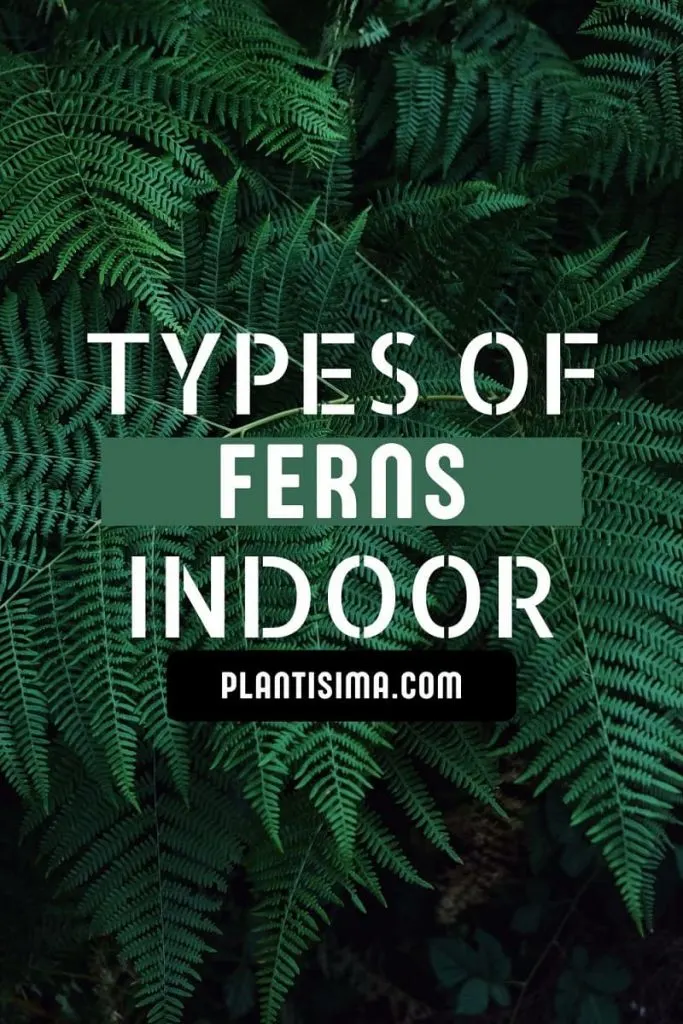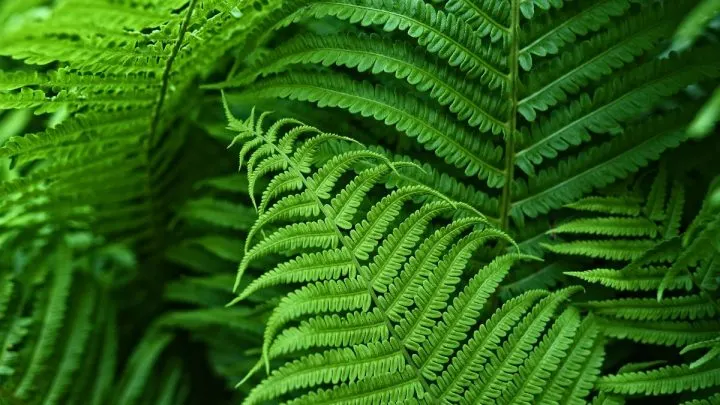For all the ferns lovers out there, we are bringing some interesting facts about types of ferns indoor. In case you want some for your houseplant collection.
There are over 8.000 fern species out there and to be able to have one of them at your home, to adjust it to your home conditions, it’s pretty amazing.
Pheeew, where to start? There are just so many types of ferns indoors. How to pick the best one for your home?
It all depends on what you like. What kind of fronds do you like and what kind of leaf shapes do you prefer in your home?
I can promise you this, by the end of this article, you’ll be sure which fern to choose for your home and I bet, it will look great.
Types Of Ferns Indoor: Are Ferns A Good Indoor Plant?
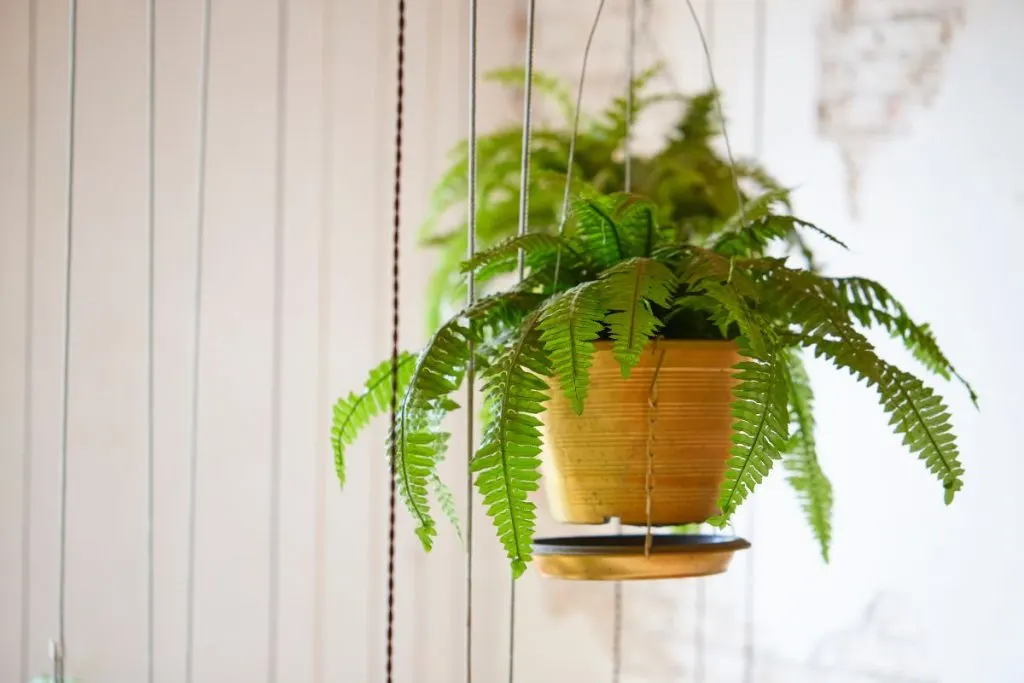
Before we dig into types of ferns indoors we should infer if firns are a good indoor plant. As with any other plant, if you’re a responsible plant owner, your plant will make a good indoor plant as well.
Speaking about ferns, if you provide the needed terms and conditions to grow such as perfect light and moist soil, your plant will just keep growing indoors. In case you’re wondering, ferns are not flowering plants.
Types Of Ferns Indoor: What Kind Of Fern Do I Have?
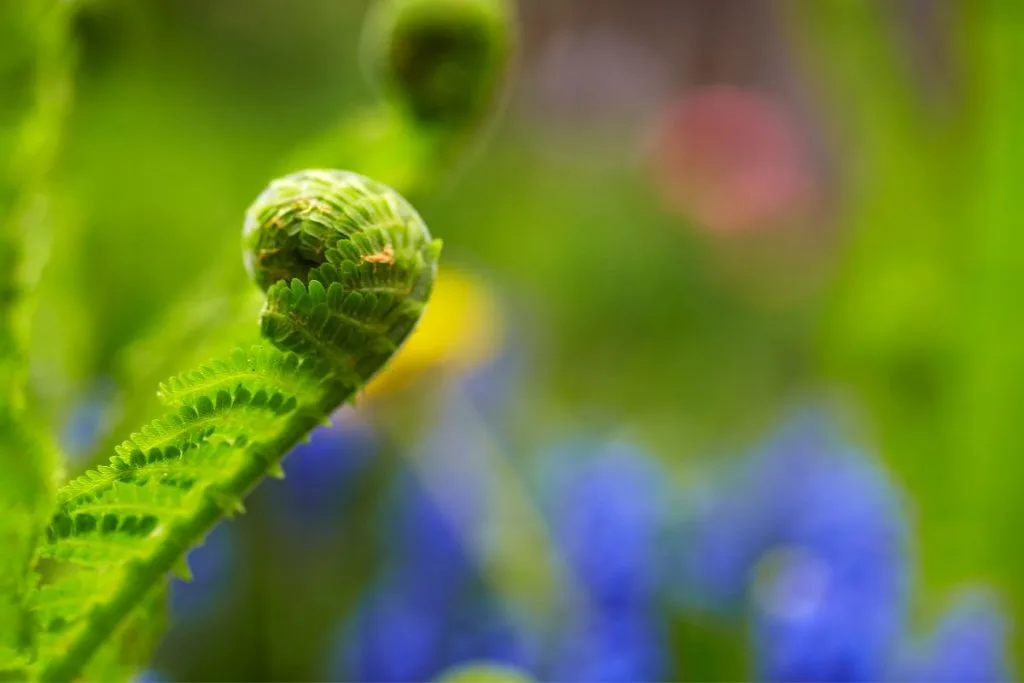
This should be easy. Even though they come from the same plant family, not every fern plant is the same. You will notice these key factors and by following them, you can see which one do you have:
- Stem
- Leaf shape
- Leaf arrangement
- Spore location
Each one of the ferns has different key factors that can be helpful to identify your type of fern. The stem will have a different structure on most ferns. Leaf shape is also very variable from one specie to another.
When it comes to a leaf arrangement, not every specie has the same one. Some are very tight and close to the stem and some species have more space between leaves and the distance between stem and leaves is bigger.
Types Of Ferns Indoor: But Which Ferns Are Okay With Indoor Conditions?
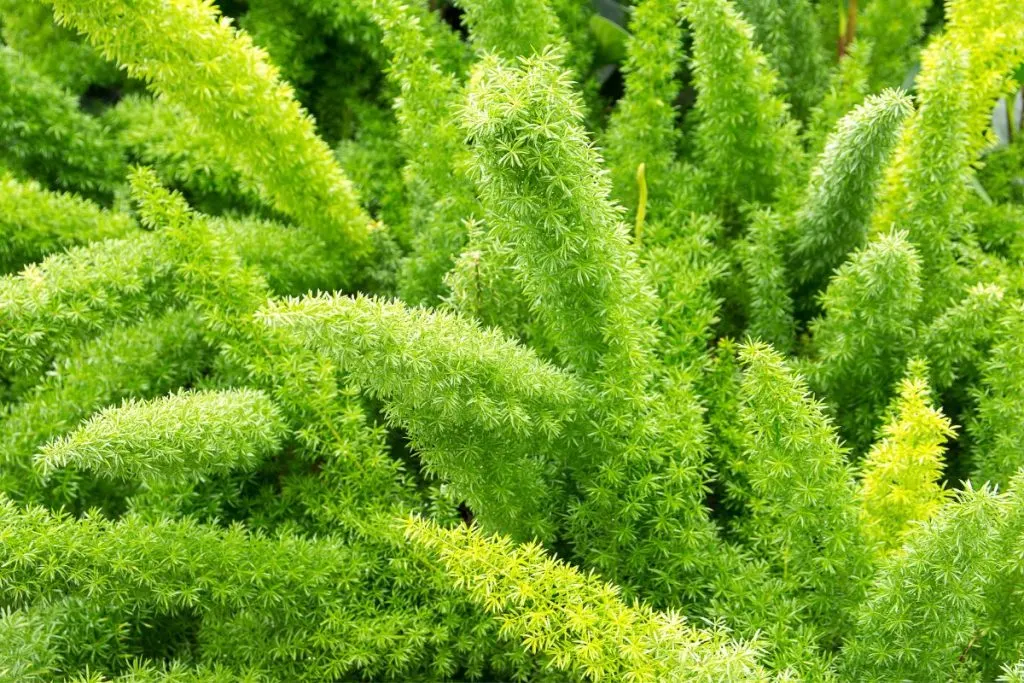
Even though we said that as long as you take care of your plant in the right way it will grow, some fern species are just acting better in indoor conditions than the other ones.
The most popular fern indoor species are:
- Boston fern
- Bird’s nest fern
- Asparagus fern
- Maidenhair fern
- Staghorn fern
- Sill bird’s nest fern
- Kangaroo fern
Types Of Ferns Indoor: Ferns Reproduce Phases
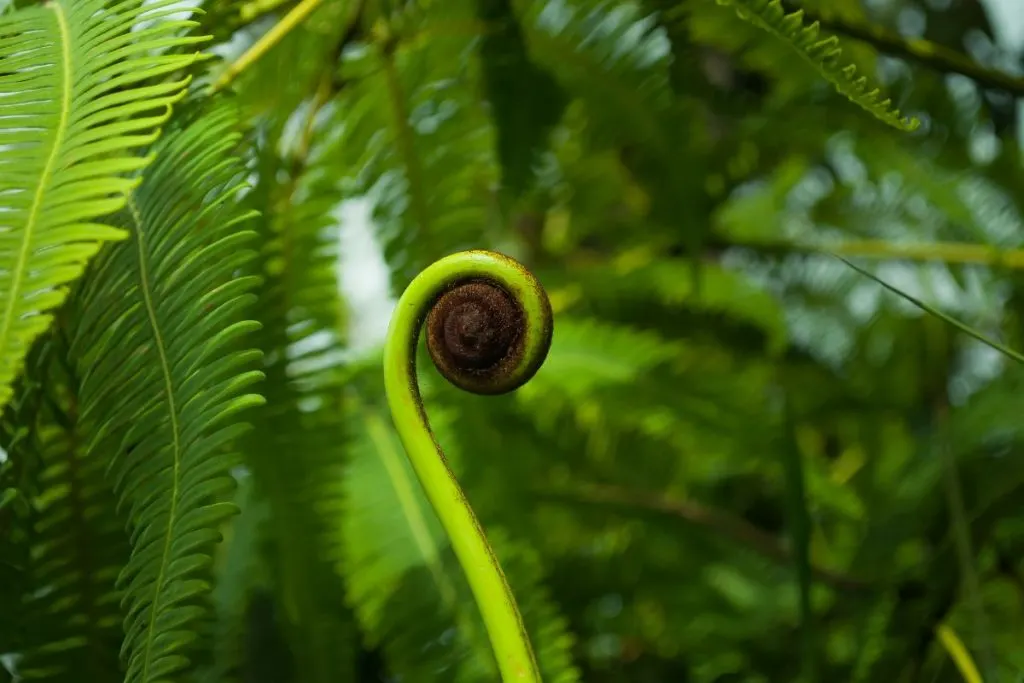
We consider ferns to be true stems because they have to conduct veins in their organs. Unlike mosses, they have real roots, stems, and leaves.
They can reproduce both sexually and asexually. They need water to reproduce. Ferns have wormholes, horsetails and ferns.
Its life cycle usually goes through 4 phases:
- Meiosis
- Mitosis
- Rhizoids
- Archegonium
Types Of Ferns Indoor: What Is The Prettiest Indoor Fearn?

Most ferns are green and that green color varies with each specie. Each of us loves different types of plants for our home, but if you have decided on a “monotonous” green plant, you certainly want to choose the most beautiful one.
There is no exact answer to this question. As with everything else, the most beautiful fern is the one that suits you best. But there is a type of fern that is most popular in homes, so maybe it is the most beautiful? It’s a Boston fern.
1. His Majesty – Boston Fern
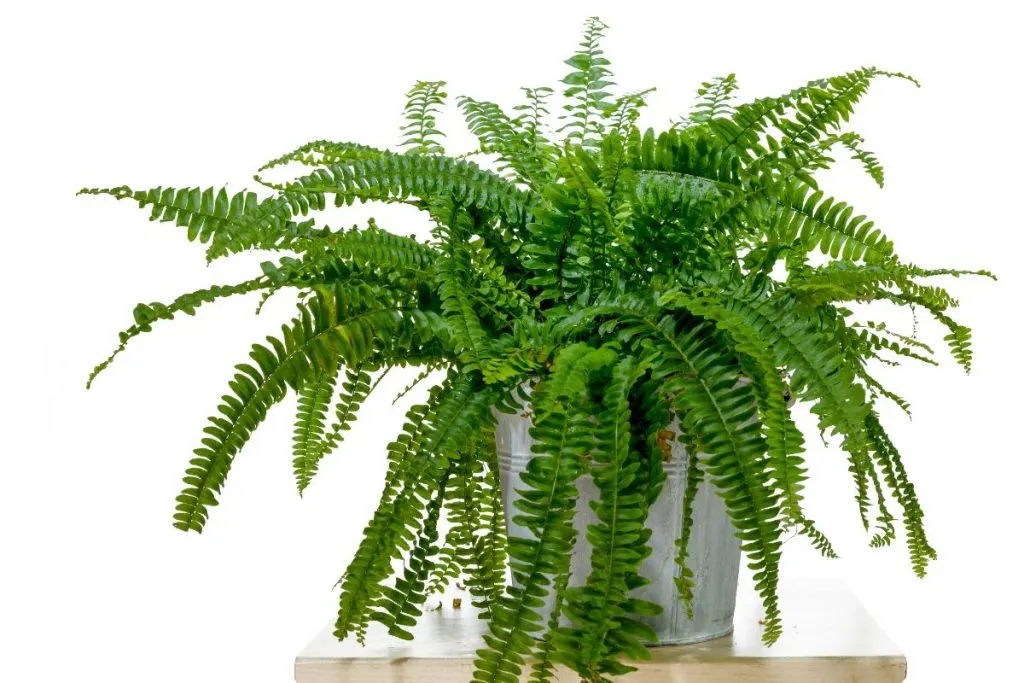
Native habitat: South America, Mexico
Sun exposure/Light: Indirect light
Height: 1 to 3 feet tall
Soil: Consistently moist soil
Humidity: High humidity
Temperature: 65ºF to 95ºF
Boston fern or Fluffy Ruffle Fern (Nephrolepis exaltata) is the most popular indoor fern. It has the most wonderful arching fronds which are very popular in homes nowadays. It might be a bit difficult to learn how to take care of it correctly and precisely but it will be worth it because of its exotic appearance.
When it comes to Boston ferns, make sure you provide the right conditions for your plant. Cool temperatures with a high percentage of humidity and indirect light are conditions that suit this plant.
Most homes have dry air, especially in the wintertime so make sure to buy an air freshener and provide a needed percentage of humidity for Boston fern. To achieve indirect light for your fern, place it by a window that doesn’t have direct sunlight/exposure to the sun.
Moist soil is also very important. Combine an optimal humidity and soil moist and Boston fern is ready to grow!
2. Bird’s Nest Fern, Dos and Don’ts
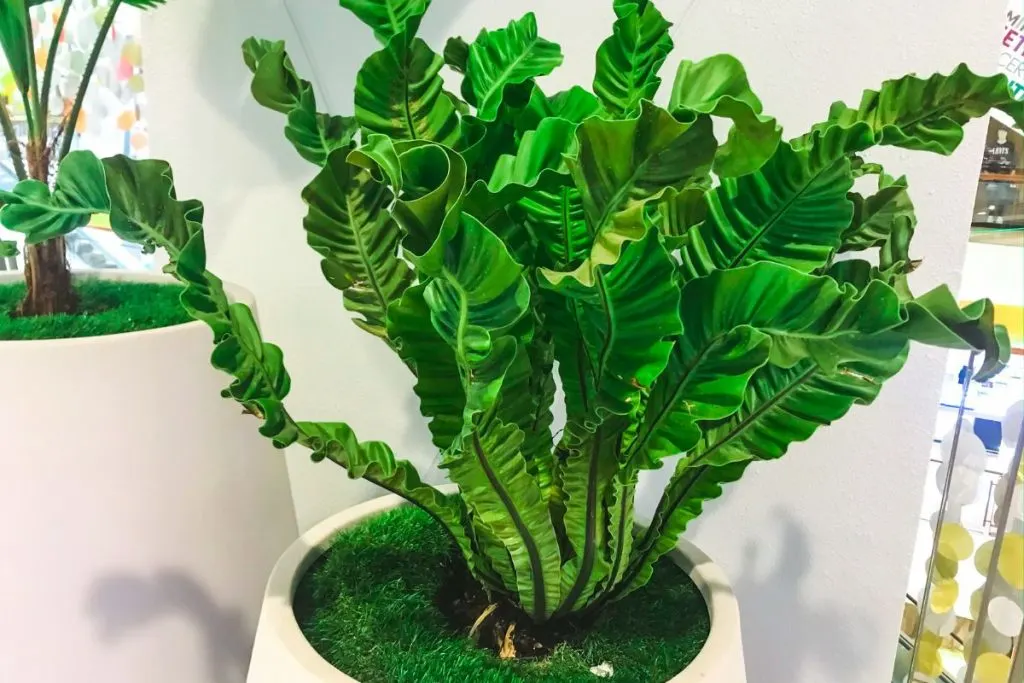
Native habitat: Hawaii
Sun exposure/Light: Keep it in a shade
Height: 2 to 4 feet tall
Soil: Lightly moist
Humidity: High humidity
Temperature: 70-90°F.
The bird’s nest fern plant got its name from the fact that the center of the plant resembles a bird’s nest. But even do we connect “nest” with something small, this is a large plant.
Bird’s nest ferns (Asplenium nidus) are identified by flat, wavy, or brittle folds. Their appearance may take into account the seaweed plant that grows on dry land.
An important aspect of fern bird care is its watering. In excellent circumstances, all ferns would like to have constantly moist but not moist soil.
Types of ferns indoors are usually a bit needy, but this one is an easy one to take care of.
Part of the reason why bird nests are an ideal houseplant is that they will tolerate soil that dries out from time to time. Fertilizers for this plant should be given only two to three times a year.
But hey, don’t go on a vacation without any responsibilities for your plant lol. Your neighbor should still occasionally water it. Remember, this is about ferns indoors, it won’t rain in there, you have to water them.
3. Asparagus Fern: How To Take Care Of It

Native habitat: South Africa
Sun exposure/Light: Full sun to shade
Height: Between 12 and 40 inches
Soil: Loamy soil
Humidity: High humidity
Temperature: Around 70 degrees Fahrenheit
Asparagus ferns (Asparagus densiflorus) usually go best with good morning sun and shade in the afternoon. Water them regularly after the seedling grows. Asparagus fern can survive drought, but maintaining good watering will bring a healthier plant.
If you notice a yellow color on your asparagus fern, it is a sign that you are giving the plant too much water or exposing it to too much sun. Ferns can sometimes cause skin rashes.
Be careful and use gloves. Asparagus ferns grow thorns. Wear gloves when handling thorns and needles. When it comes to its soil, loamy soil is great, but try combining it with a pebble tray.
4. Maidenhair Fern: What To Know About

Native habitat: Africa, Australia, Norfolk Island
Sun exposure/Light: Indirect morning sun
Height: To 2.5 feet tall
Soil: Moist but well-draining potting soil.
Humidity: High humidity
Temperature: About 70°F
Maidenhair fern (Adiantum) needs partial shade. This type of fern requires high humidity and moist soil to be able to grow.
The soil of this species should be fertilized at least once a month. This type of fern has a lacy appearance with wiry stems and compact growth of small leaves that create a beautiful appearance of this plant.
They thrive in cold climates. The name comes from the ability of this plant to produce oils that can be used in making shampoos.
Constantly moist soil is not important for this plant, moist air is more important to it. Maidenhair fern prefers soil rich in humus. In that case, you should try peat moss for this type of fern.
5. Staghorn Fern – Plant Care Guide
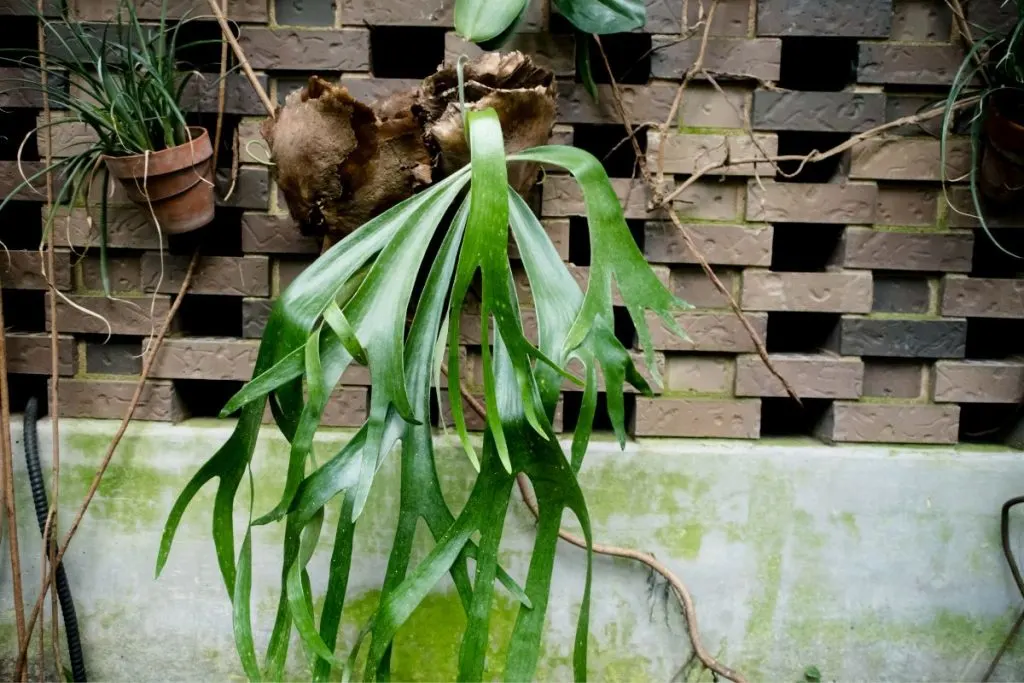
Native habitat: Africa, Southeast Asia, and Australia
Sun exposure/Light: Indirect sunlight or a bright light
Height: 2 to 3 feet tall
Soil: Avoid mineral soil, use orchid bark and cactus mix
Humidity: High humidity
Temperature: 80°F–90°F (26.6°C– 32.2°C)
There are 17 different species of Staghorn ferns (Platycerium alcicorne) which coincide with several other names including elkhorn fern and antelope ears.
Each of them has horn-like leaves and a flat basal leaf. The leaves are barren with wavy edges, and over the years they become brown and papery.
They overlap on the fastening surface and provide stability to the ferns. Caring for horn ferns is based on careful control of humidity, light, and temperature. Ferns can live for many years with good care and will gain several hundred pounds in their natural habitat.
6. Sill Bird’s Nest Fern Indoor Gardening
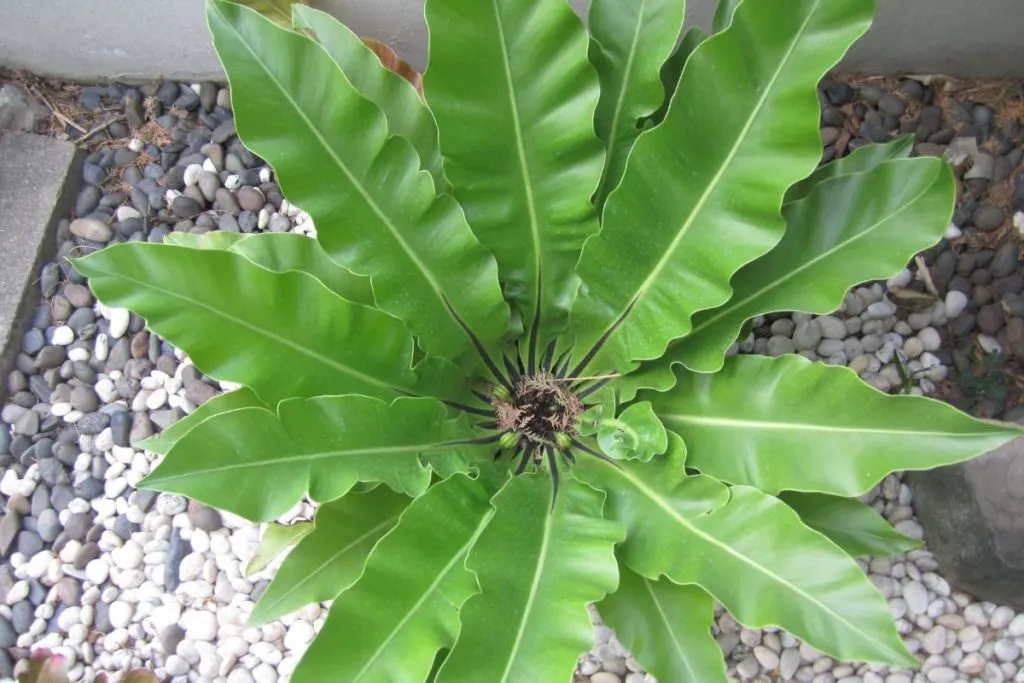
Native habitat: Australia, Hawaii
Sun exposure/ Light: Medium to bright light
Height: 3 to 5 feet tall
Soil: Well-draining soil
Humidity: Medium to high humidity
Temperature: Between 60 and 80 degrees Fahrenheit
This plant has bright green leaves and thick fronds just like other fern varieties indoors. This fern plant has divided fronds but that is exactly what gives this plant a unique look. Just as a staghorn fern, if you put it in hanging baskets it will surely look amazing.
This type of fern is doing alright when it’s exposed to cold hardy. But don’t play with the fire, you don’t want dead fronds, you still have to be careful. Because of its waxy texture, it will look awesome in your houseplant collection.
7. Kangaroo Fern Indoors
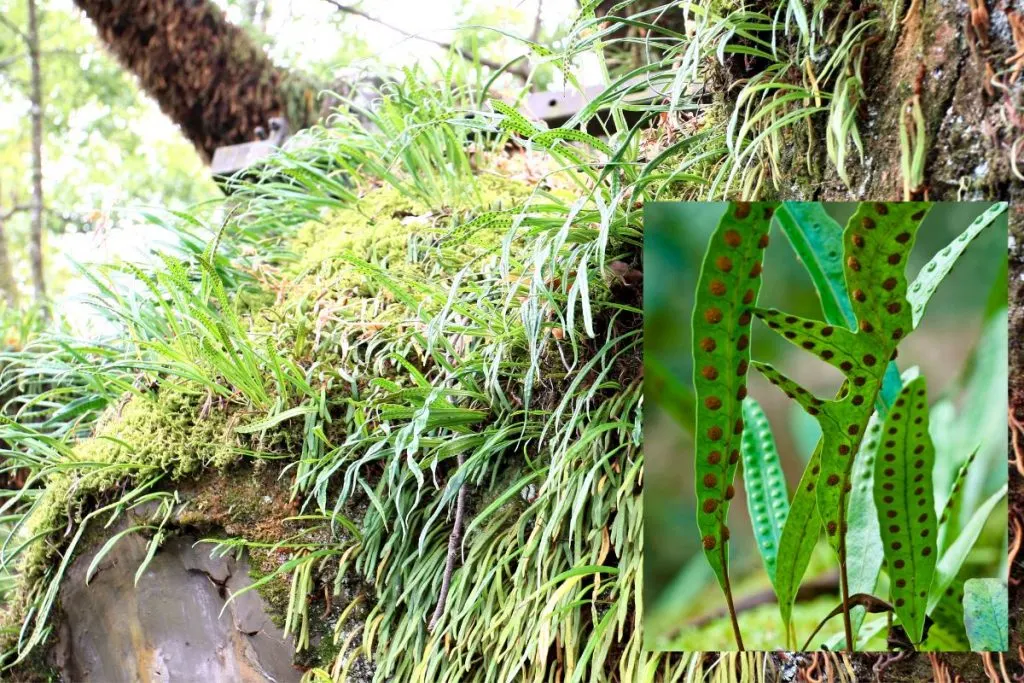
Native habitat: Australia
Sun exposure/ Light: Indirect/Filtered light
Height: 1 foot tall
Soil: Peat moss
Humidity: High humidity
Temperature: 60°F – 75°F.
Kangaroo Fern (Microsorum Pustulatum) plant thrives best in shade or filtered shade. It should not receive direct sunlight. If grown as a houseplant, avoid placing it too close to the window. It cannot survive cold temperatures.
The ideal temperature range is 70 ° to 75 ° C (21 ° – 24 ° C) during spring, summer, and autumn. During the winter, the plant can withstand temperatures between 60 ° and 65 ° Fahrenheit (15 ° – 18 ° C). In colder conditions, it can receive a little more sunlight.
Water Microsorum pustulatum when the soil is mostly dry. Use liquid fertilizer for this plant. Add fertilizer once a month and that should do it. Fern care is very important for this needy specie.
8. Crocodile Fern: Microsorium Musifolium ‘Crocydyllus’

Native habitat: Southeast Asian islands
Sun exposure/ Light: Low to moderate sunlight
Height: 2 to 5 feet tall
Soil: Rich, moist, and well-draining soil
Humidity: High humidity
Temperature: Between 65 and 75 degrees Fahrenheit
Crocodile fern (Microsorium Musifolium ‘Crocydyllus’) is a tropical type of growing fern suitable for outdoor cultivation only in temperate climatic zones of USDA plant hardness 10 and 11 (and sometimes 9, with protection).
Grow crocodile ferns indoors if your climate has the possibility of winter frosts at all; cool temperatures will kill the plant quickly. The kitchen or bathroom is an ideal environment because crocodile fern benefits from moisture.
The crocodile fern needs regular water, but the plant will not last long in moist, poorly drained soil.
Rich, well-drained potting soil, like soil formulated for African violets, works very well. To keep the plant happy, water whenever the surface of the potting mix feels a little dry.
9. Rabbit’s Foot Fern – Taking Care Of Davallia Denticulata
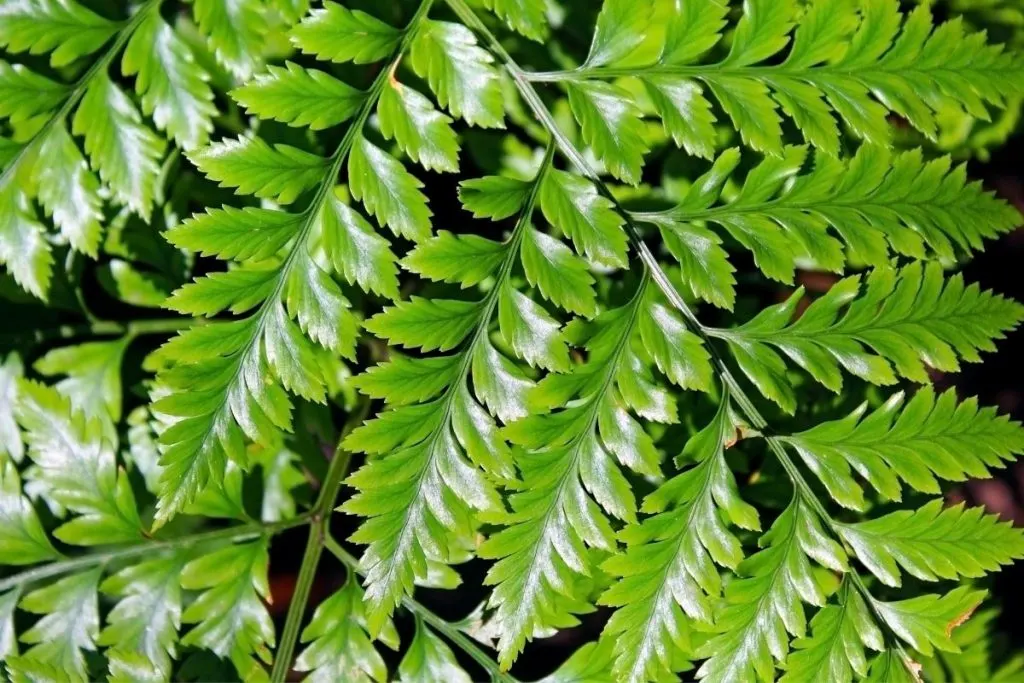
Native habitat: Tropical Asia
Sun exposure/ Light: Indirect sunlight
Height: 3 feet tall
Soil: Part Sand, Part soil
Humidity: Medium humidity
Temperature: Between 70 and 75 degrees F.
Rabbit’s foot fern-(Davallia denticulata) gets its usual name from the yellowish-brown fuzzy rhizomes resembling a rabbit’s foot but is sometimes called a squirrel fern. This type of fern is a true fern.
This type of indoor fern is also a good ground cover if you plant it as an outdoor fern. Hang a plant basket near an east-facing window receiving indirect light during spring and summer, while a north-facing window is an ideal place during the winter season.
10. Eagle Ferns

Native habitat: Europe, Asia, North America
Sun exposure/ Light: Bright indirect
Height: 3 feet tall
Soil: Part Sand, Part soil
Humidity: Medium humidity
Temperature: Can stand temperature minus 15F.
The eagle fern (Pteridium aquilinum, Pteris aquilina), a large carrier of ferns or eagles, is named because this strong perennial is of imposing size and develops thanks to its rhizomes.
It is found almost everywhere in the world, and in France, it often covers vast areas at the edge of a forest, in thickets, in glades, or in cutting wood; many small animals hide under its leaves.
The plant is useful in the garden as a mulch that repels snails and for the preparation of insecticidal, fungal, and purulent pulp of ferns that repel insects, and snails and provide green manure rich in nitrogen, phosphorus, and potassium.
Because of these characteristics, it is not good for a houseplant nor would it be good for other plants in the house.
11. Japanese Painted Fern: Its Characteristics

Native habitat: Japan, China, Korea
Sun exposure/ Light: Bright indirect
Height: 1 to 3 feet tall
Soil: Moist but well-drained
Humidity: Lower humidity
Temperature: 55 to 80 F
The Japanese Painted fern (Athyrium niponicum) is unique, completely unlike any other. The veins are mostly purple, sometimes turning red. The perfect choice for gardeners who love the exotic, especially in combination with colorful funky.
Its leaves are 20 to 35 cm long, two-limbed or three-limbed to foamy, greenish-grey-silvery with a purple-red center.
The segments are lanceolate to oblong or oval with an edge that can be incised or lobed. On this type of fern, we can’t notice any shade of green, not even light green.
12. Lady Fern: Queen Of The Forest Conquers Interiors
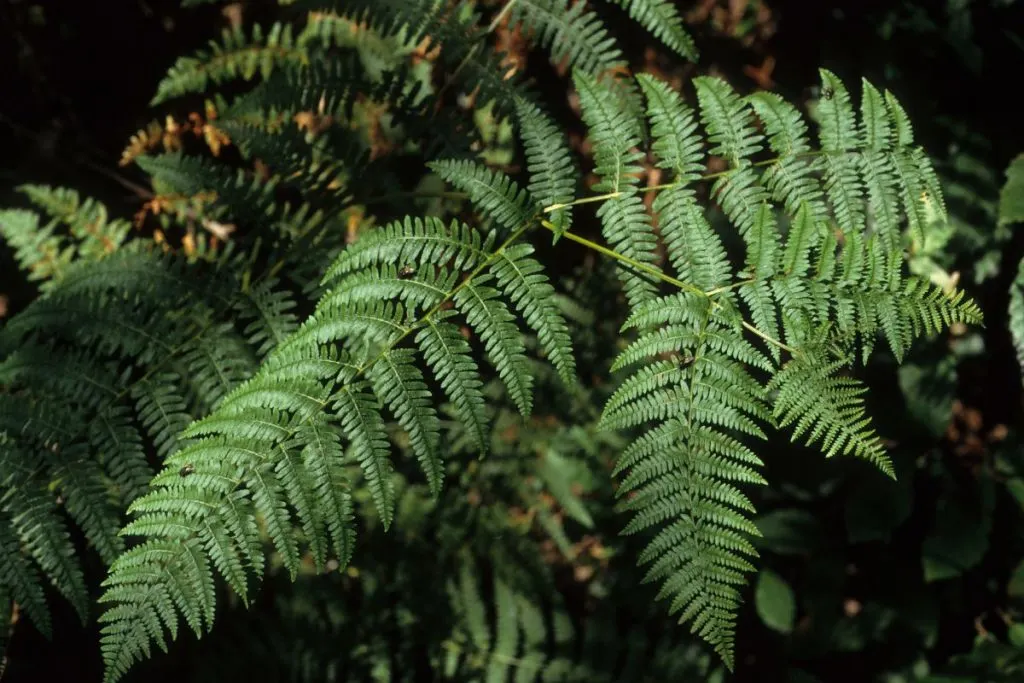
Native habitat: Continental US and Alaska
Sun exposure/ Light: Shade
Height: 2 to 5 feet tall
Soil: Loamy soil
Humidity: Lower humidity
Temperature: Can stand temperature minus 15F.
Lady Fern-(Athyrium filix-femina). When it erupts, its leaves are twisted like a snail, and later they become long. It grows in forests from higher hills to over 1500 m above sea level.
The leaves contain a lot of vitamins and are used in the diet. Lady fern stands presence of other ferns very well. When you plan it as an indoor fern it will most definitely become one of your favorite house plants because of its rich look and way of growth.
13. Silver Lace Fern – About Plant
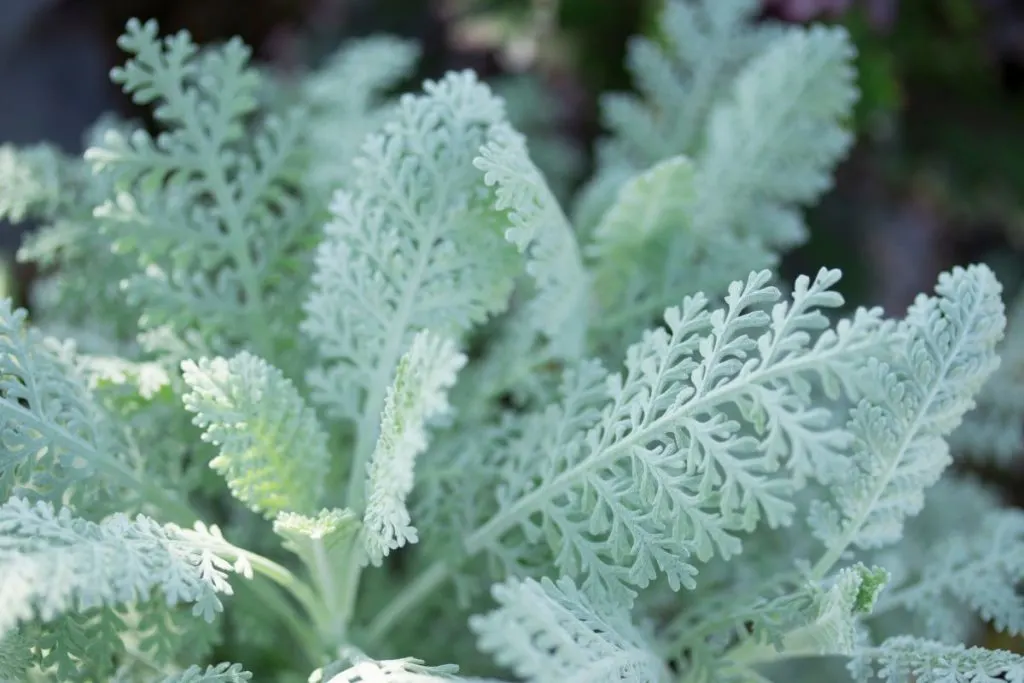
Native habitat: China
Sun exposure/ Light: Direct sunlight for at least 6 hours per day
Height: 2 to 3 feet tall
Soil: Humus-rich, Medium moisture soil
Humidity: Medium humidity
Temperature: 60° – 75 F (15° – 24° C)
Silver lace fern (Pteris ensiformis) has good-looking lacy fronds. The growth of this plant and the color of the leaves largely depend on many factors, including temperature, sunlight, and soil type. This plant blooms in gardens or terrariums, which have stones to increase moisture.
Silver lace prefers filtered, bright light throughout the summer season because it grows actively during these months. This fern needs a lot of light during the winter season. It can handle temperatures between 60 ° – 75 ° Celsius (15 ° – 24 ° C), but not 55 ° Celsius (13 ° C) or lower.
14. Hart’s Tongue Fern
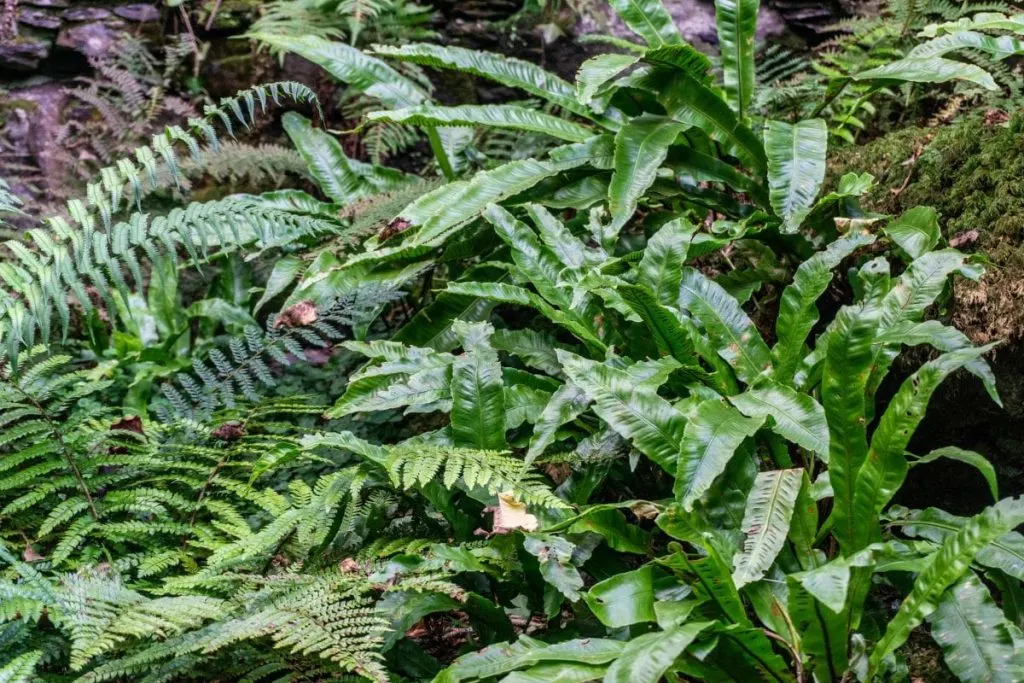
Native habitat: Alabama, and Nuevo Leon, Mexico
Sun exposure/ Light: Partial sun
Height: 12 to 18 inches tall
Soil: Humus rich
Humidity: High humidity
Temperature: 50-65°F (10-18 °C)
Hart’s tongue fern (Asplenium scolopendrium). Although Hart’s language fern was once prolific in highland and other temperate countries in its native range, now has a very limited distribution and is rapidly becoming a rarity, even in its home regions.
Hart’s tongue is a popular type of outdoor fern as well. Experts connect the gradual disappearance of the plant with humans.
This plant can begin to show signs of stress in extremely dry environments. This means that the leaves may begin to fall off or develop brown edges, and the leaves may begin to wrinkle. If the plant remains in moist or saturated soil, its roots will begin to rot.
15. Cretan Brake Fern
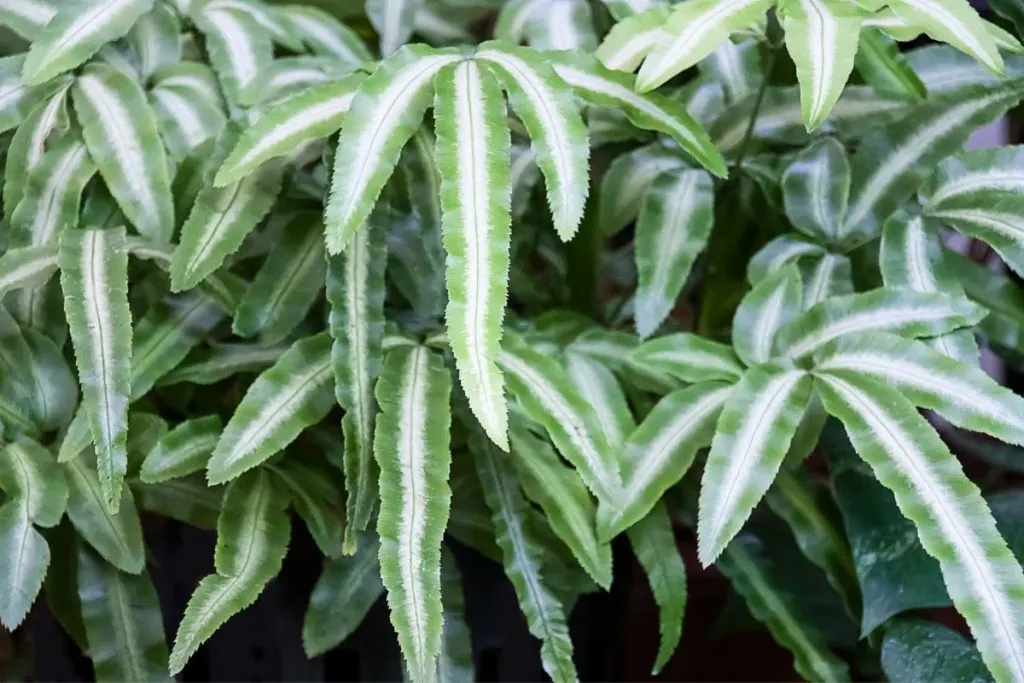
Native habitat: Europe, Asia, Africa
Sun exposure/Light: Bright light direct sunlight
Height: 18 to 24 inches tall
Soil: Potting mix/sphagnum moss
Humidity: High humidity
Temperature: Between 65-75ºF
Cretan Fern (Pteris cretica L.) forms raised clusters, composed of numerous leaves with a long tail that grows from an underground rhizome. The leaves of this fern reach 30-40 cm in length and consist of several fairly large, oblong leaves. The Cretan eagle, like most ferns, loves semi-shaded places.
Also, it tolerates shade but hates direct sunlight. It is best to place it in an apartment on the north, northeast, or northwest window. Cretan fern can also be placed deep in the room, whose windows face east or west.
16. Australian Fern
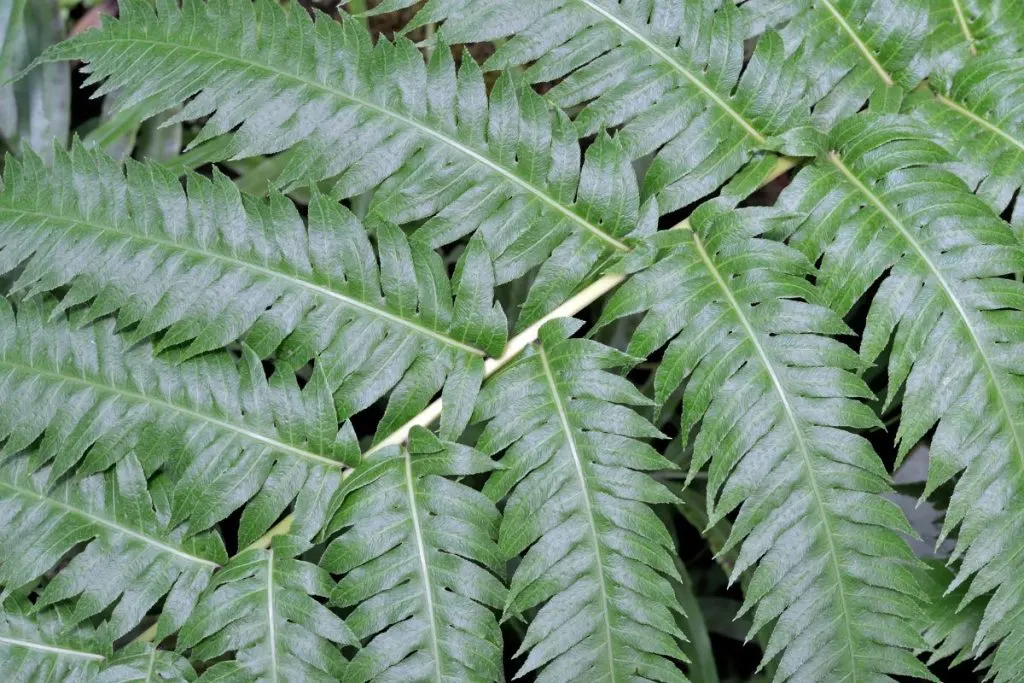
Native habitat: Australia
Sun exposure/Light: Shade
Height: 15 or even 30 feet tall
Soil: Sand, loam, and clay
Humidity: High humidity
Temperature: 65 to 80 degrees F
Australian fern (Cyathea australis) reminds of Lady fern by its looks. They both have thick feathery fronds. The difference between these two types of fern indoors is that the Australian fern is a lot bigger and its green color is a darker shade of green.
17. Lemon Button Fern
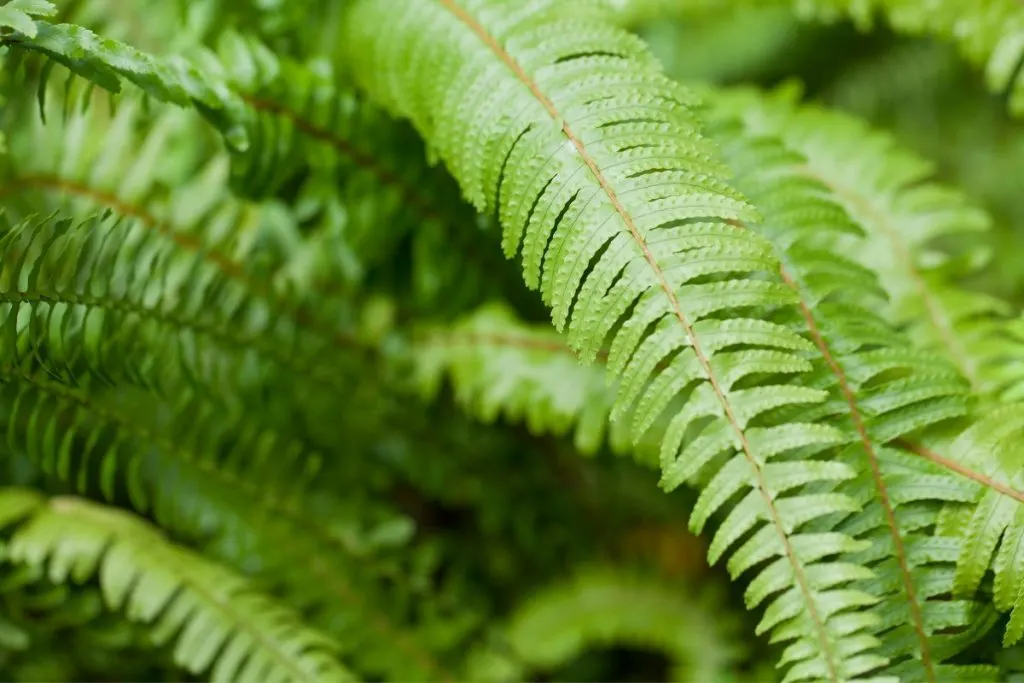
Native habitat: Australia and Asia
Sun exposure/Light: filtered light
Height: 1 foot tall
Soil: Loamy
Humidity: Medium humidity
Temperature: 60 ° F
Lemon button fern (Nephrolepis cordifolia). This type of fern needs water once its loamy soil is dry. Dip your finger in the soil and if you feel that it’s dry, it’s time to water it.
Since the soil was dry don’t overdo it, it doesn’t need a lot of water all at once. Because of its interesting leaves, some people plant it in hanging baskets as well, but they prefer flowerpots more.
Types Of Ferns Indoor – Dark Green Fronds, What Do They Mean?
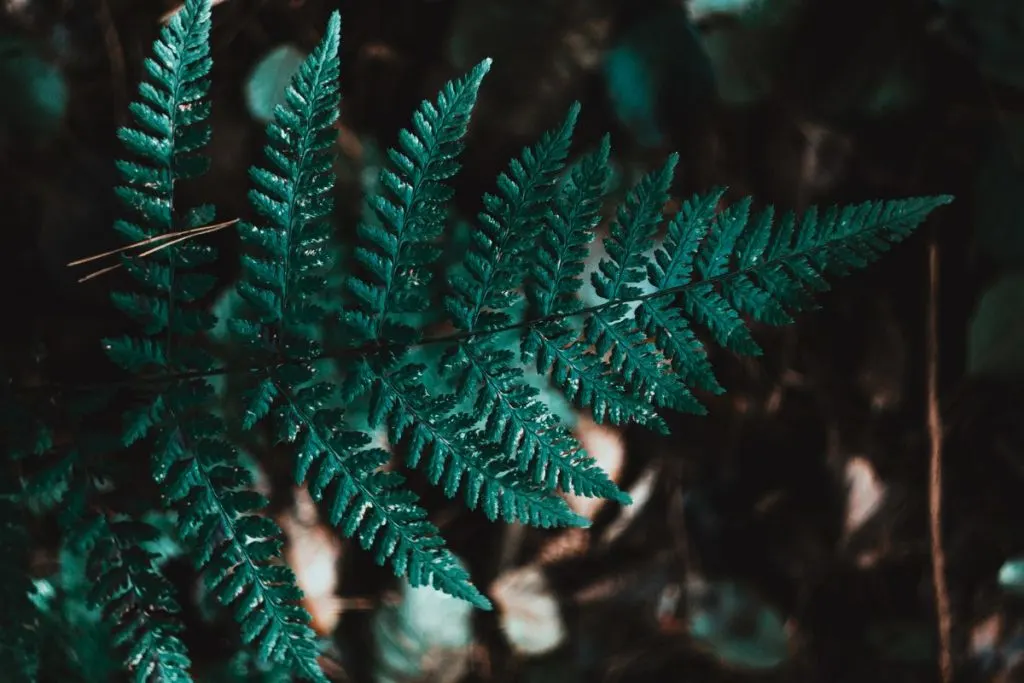
Probably many of you are wondering why the leaves of some species of ferns are much greener than other species.
The answer is simple. These types of ferns are more exposed to the sun, and therefore the whole process of photosynthesis contains more chlorophyll in their leaves.
In this case, chlorophyll b is the one that gives them that green color or dark green color. In the spring, however, when the temperature is lower and the sunlight is brighter, they will also turn into a lighter shade of green.
History Of Ferns, Types Of Ferns Indoor
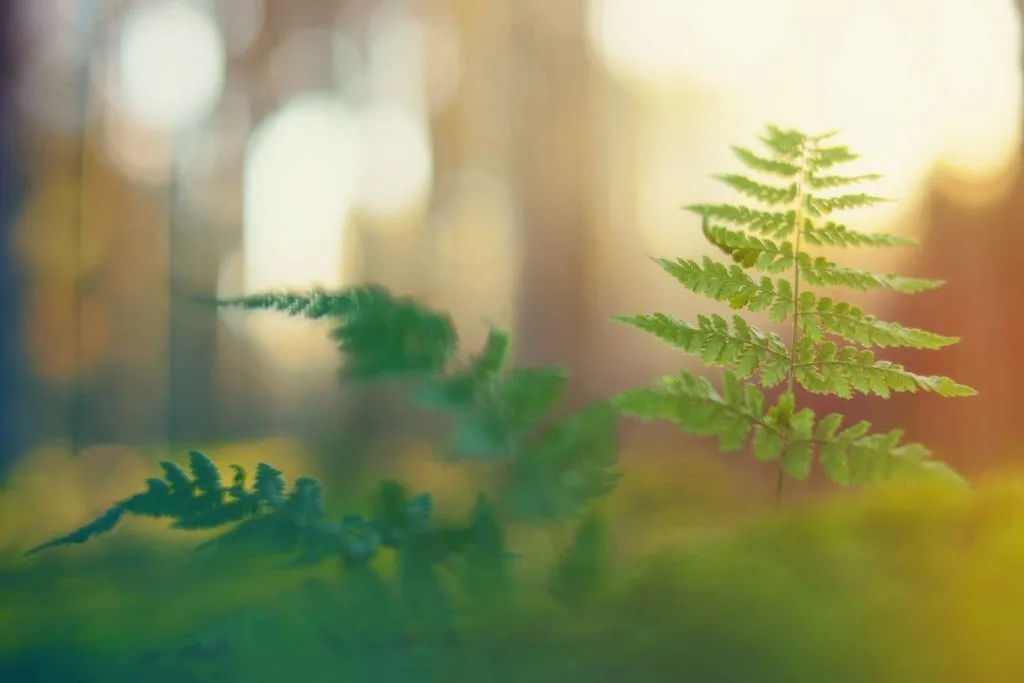
Fern plants are one of the oldest plants on our planet Earth. They date back 300 million years. Some scientists estimate that they could be even older.
The species we know today, however, appeared 150 million years ago. Today we use them in food, medicine, and as houseplants. Paleontologists claim that the chromosomes of these plants have not changed for 180 million years.
In Conclusion About Types Of Ferns Indoor
Now that you read our ultimate guide on how to take care of your indoor ferns you are more than ready to get one. So many types of ferns indoors but I know you have a favorite one.
Pick that one and enrich your houseplant collection.
Thanks for stopping by and good luck. In case you need to remind yourself of some steps, save the article and go through it as many times as you need to make sure your baby fern is getting the right treatment.
